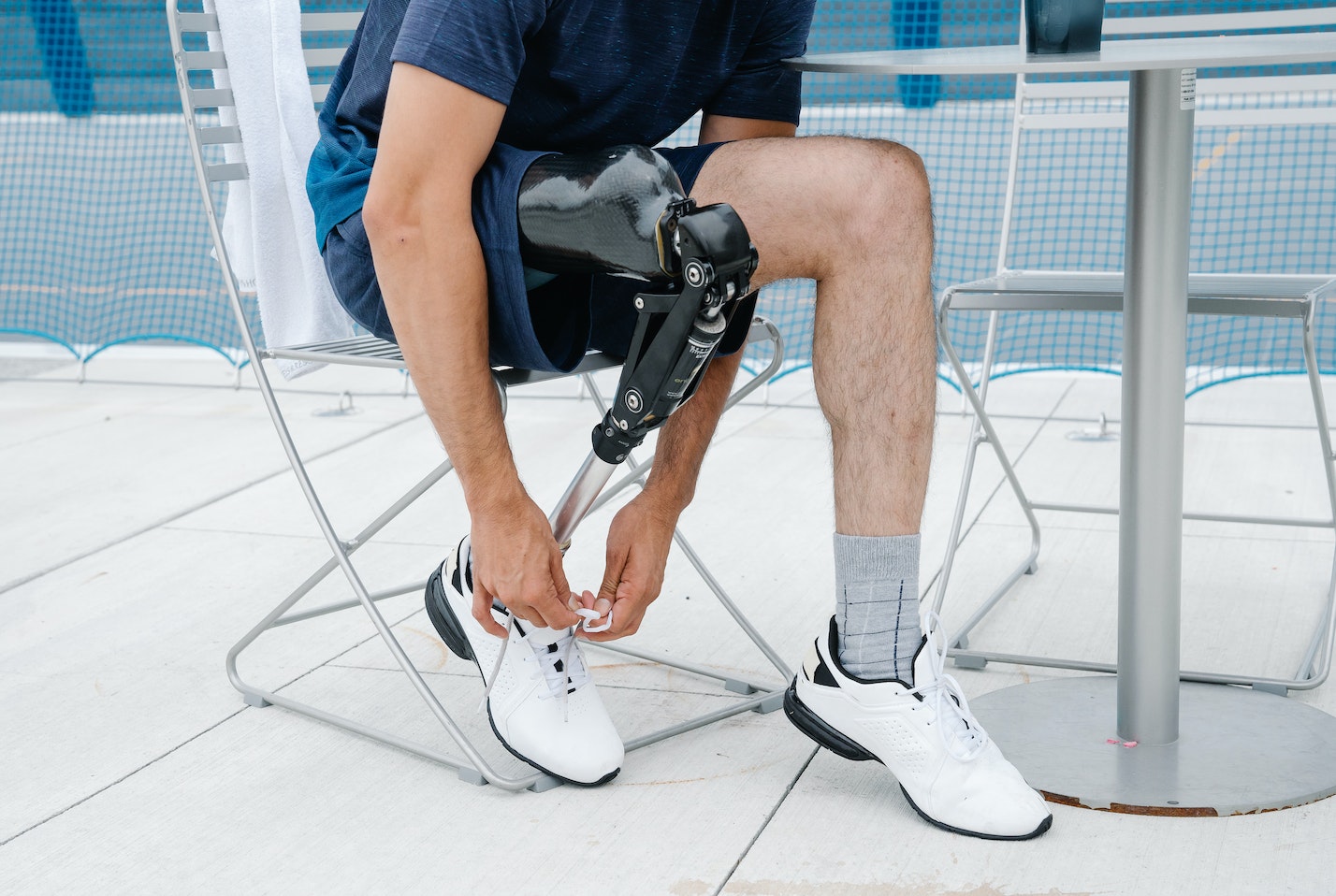OF ALL PROSTHETIC COMPONENTS, THE KNEE SYSTEM IS ARGUABLY THE MOST COMPLEX. The KNEE SYSTEM is arguably the most complex of all PROSTHETIC COMPONENTS. IT MUST PROVIDE RELIABLE SUPPORT WHEN STANDING, ALLOW SMOOTH, CONTROLLED MOTION WHEN WALKING, AND PERMIT UNRESTRICTED MOVEMENT FOR SITTING, BENDING AND KNEELING. It must provide reliable support when standing, allow SMOOTH, CONTROLLED MOTION when walking, and permit unrestricted movement for sitting, benting, and kneeling.
Prosthetic Knee Systems have evolved greatly over time, from the simple pendulum of the 1600s to those regulated by rubber bands and springs or pneumatic or hydraulic components. Prosthetic Knee Systems 01 Prosthetic knees evolved from the simple pendulums of the 1600s to the more sophisticated hydraulic or rubber components. Now, some knee units have advanced motion control modulated through microprocessors. Some knee units now have sophisticated motion control that is modulated by microprocessors.
For the transfemoral (above-knee, including hip and knee disarticulation) amputee, successful function depends on selecting the correct knee to fit the person’s age, health, activity level and lifestyle. The transfemoral (above the knee, including hip and knee discarticulation) amputee’s success depends on the selection of the right knee for the individual’s health, age, and lifestyle. The latest or advanced knee is not necessarily the best choice for everyone. Not everyone will be able to afford the most advanced or modern knee. For some amputees, safety and stability are more important than functional performance. Safety and stability are important for some amputees. Active amputees, on the other hand, prefer a knee that will give them a higher level of function even if it requires greater control. For active amputees, safety and stability are more important than functional performance.
Given the wide variety of choices and consumer needs, prosthetists and rehabilitation specialists can help amputees choose the best prosthetic knees for their individual requirements. Prothetists and rehabilitation experts can help amputees select the right prosthetic knee for them, given the many options and customer needs. They can also teach amputees how to use their new knees properly, which is critical for avoiding discomfort, stumbling and falling. Amputees can learn how to properly use their prosthetic knees, which is crucial for avoiding pain, stumbling, and falling.
A key way to evaluate an individual’s prosthetic needs is to observe his or her walking cycle, which can be divided into two parts: the “stance phase” (when the leg is on the ground supporting the body) and the “swing phase” (when the leg is off the ground, also referred to as “extension”). An important way to assess a person’s prosthetic needs, is to observe their walking cycle. This can be broken down into the “stance phase”, when the leg supports the body, and the “swing Phase”, which is when the leg extends off the ground. The happy medium between these two extremes (stance, or stability, versus ease of swing, or flexion) is different for each individual. Each person will find the happy medium between these extremes (stance or stability versus ease or swinging, or flexion).
Although over 100 individual knee mechanisms are commercially available, they can be divided into two major classifications: mechanical and computerized. There are over 100 different knee mechanisms that can be purchased commercially. However, there are two main classifications of these devices: computerized and mechanical. Mechanical knees can be further separated into two groups: single-axis knees and polycentric, or multiaxis, knees. The two main types of mechanical knees are single-axis or polycentric (or multiaxis) knees. All knee units, regardless of their level of complexity, require additional mechanisms for stability (manual or weight-activated locking systems) and additional mechanisms for control of motion (constant or variable friction and “fluid” pneumatic or hydraulic control). Regardless of the complexity of the knee unit, additional mechanisms are required to ensure stability (manual, weight-activated locking mechanisms) and control of motion (fluid pneumatic, hydraulic, and constant or variable friction).
Single Axis Vs. Polycentric knees
The single-axis knee, essentially a simple hinge, is generally considered the “workhorse” of the basic knee classes due to its relative simplicity, which makes it the most economical, most durable, and lightest option available. Because it is essentially a simple hinge and the single-axis knee is the most cost-effective, durable, and lightest of all basic knee classes, it is often referred to as the “workhorse”.
Single-axis knees do have limitations, however. However, single-axis knees have some limitations. By virtue of their simplicity, the amputees must use their own muscle power to keep them stable when standing. Because they are so simple, amputees with control must use their own muscles to maintain their balance when standing.
To compensate for this, the single-axis knee often incorporates a constant friction control and a manual lock. The single-axis knee often includes a constant friction control and manual lock to compensate. The friction keeps the leg from swinging forward too quickly as it swings through to the next step. The friction prevents the leg from moving forward too fast and allows it to swing through to the next step.
Prosthetic Knee Systems 03 Polycentric knees, also referred to as “fourbar” knees, are more complex in design and have multiple axes of rotation. They have a more complicated design and multiple axes for rotation. Their versatility is the primary reason for their popularity. They are very popular because of their versatility. They can be set up to be very stable during early stance phase, yet easy to bend to initiate the swing phase or to sit down. They can be set up so that they are stable in the early stance phase and yet allow for easy movement to start the swing phase. Another popular feature of the knee’s design is that the leg’s overall length shortens when a step is initiated, reducing the risk of stumbling. Another feature that is popular with the knee design is the fact that the leg’s length decreases when a step has been initiated. This reduces the chance of you stumbling.
Polycentric knees are suitable for a wide range of amputees. A wide variety of amputees can use polycentric knees. Various versions are ideal for amputees who can’t walk securely with other knees, have knee disarticulation or bilateral leg amputations, or have long residual limbs. Different versions are suitable for amputees with long residual limbs or who cannot walk with their other knees.
A standard polycentric knee has a simple mechanical swing control that provides an optimal single walking speed; however, many polycentric knees incorporate fluid (pneumatic or hydraulic) swing control to permit variable walking speeds. The standard polycentric knee uses a mechanical swing control to provide a single optimal walking speed. However, many polycentric knees include fluid (pneumatic) or hydraulic swing controls to allow for variable walking speeds. The most common limitation of the polycentric design is that the range of motion about the knee may be restricted to some degree, though usually not enough to pose a significant problem. Although the most obvious limitation to the polycentric design is the limited range of motion around the knee, it is not sufficient to cause a problem. Polycentric knees are also heavier and contain parts that may need to be serviced or replaced more often than those of other types of prosthetic knees. Polycentric knees can be heavier than other
types of prosthetic knees and may require more frequent service or replacement.
STABILITY OPTIONS STABILITY OPTIONS
Manual Vs. Weight-Activated Locking Systems
Some amputees need or desire the security of a knee joint that locks in extension to prevent buckling. Amputees may need or want a lockable knee joint to protect them from buckling. One option is the manual locking knee, which incorporates an automatic lock that can be unlocked voluntarily. The manual locking knee is another option. It has an automatic lock that can also be unlocked at will. This is the most stable knee available. This knee is considered the most stable. Walking is possible with the lock either engaged or disengaged, although the locked knee requires excessive energy to use and produces a stiff, awkward gait. The lock can be either disengaged or engaged, but walking is possible even though the knee is locked. The manual locking knee is appropriate for weak or unstable patients as well as more active individuals who frequently walk on unstable terrain. Manual locking knees are suitable for patients who are weak or unstable, as well as active people who walk on uneven terrain.
Another option is the weight-activated stance-control knee. The weight-activated, stance-control knee is another option. This knee is very stable and is often prescribed for a first prosthesis. This knee is stable and often recommended for the first prosthesis. When weight is placed on the prosthesis, the knee will not bend until the weight is displaced. The knee won’t bend if weight is added to the prosthesis. This system functions as a constant-friction knee during leg swing but is held in extension by a braking mechanism as weight is applied during stance phase. This system acts as a constant friction knee during leg swing, but it is kept in extension by an braking mechanism when weight is applied during the stance phase. This knee is a common choice for older or less active amputees. This knee is popular for amputees who are older or less active.
MOTION CONTROL MODE
Constant Friction Vs. Variable Friction
All knee systems require some degree of swing control to maintain a consistent gait. Swing control is a requirement for all knee systems to maintain a consistent gait. In many cases, this control is provided by mechanical friction at the axis of rotation and is adjusted to match the normal cadence of the opposite leg. This control is often provided by mechanical friction at axis rotation. It is adjusted to match the normal cadence for the opposite leg. Constant-friction knee units are simple, lightweight and dependable. The constant-friction knee unit is lightweight, reliable and simple. Their main disadvantage is that the knee is adjusted for a single walking speed at any given time. The main problem with these knee units is their ability to adjust for one walking speed at a time.
Variable friction provides increased resistance as the knee bends from full extension. Variable friction increases resistance when the knee bends beyond full extension. This provides “cadence response,” allowing variable walking speeds; however, this system requires frequent adjustment and replacement of moving parts and is considered less advanced than fluid control knee systems. This allows for “cadence response”, which allows for variable walking speeds. However, fluid control knee systems are more advanced and require frequent adjustments and replacements of moving parts.
Fluid control systems: Hydraulic Vs. Pneumatic
Advanced swing control for prosthetic knees uses fluid dynamics to provide variable resistance, enabling amputees to walk comfortably at different speeds. Fluid dynamics provide fluid control to allow amputees to move comfortably at different speeds.
These units consist of pistons inside cylinders containing air (pneumatic) or fluid (hydraulic). These units are made up of pistons within cylinders that contain fluid (hydraulic) or air (pneumatic). Pneumatic control compresses air as the knee is flexed, stores the energy, then returns the energy as the knee moves into extension. The pneumatic control compresses the air when the knee is bent, stores the energy and then returns it as the knee extends. Gait control can be further enhanced with the addition of a spring coil. A spring coil can further enhance gait control. Pneumatic systems are generally considered to provide superior swing control to friction knees but to be less effective than hydraulic systems. Although pneumatic systems provide better swing control than friction knees, they are less effective than hydraulic ones.
For active amputees, hydraulic systems provide the closest thing to normal knee function. Hydraulic systems are the closest to normal knee function for active amputees. Hydraulic systems use a liquid medium (usually silicone oil) instead of air to respond to a wide range of walking speeds. Hydraulic systems respond to walking speeds at a wide range using a liquid medium (most often silicone oil). Although hydraulic knees provide a smoother gait, they are heavier, require more maintenance, and a higher initial cost. Hydraulic knees offer a more natural gait but are heavier and require more maintenance.
Microprocessor Knees
Microprocessor knees are a relatively new development in prosthetic technology. The microprocessor knee is a new advancement in prosthetic technology. Several such new knees are now available or in development. Many of these new knees are currently available or under development.
Onboard sensors detect movement and timing and then adjust a fluid /air control cylinder accordingly. The fluid/air control cylinder is adjusted according to movement and timing by the onboard sensors. These microprocessor-controlled knees lower the amount of effort amputees must use to control their timing, resulting in a more natural gait.
In spite of all of the amazing inventions and constant tweaks and improvements, the perfect prosthetic knee has yet to be invented; otherwise, there wouldn’t be over 100 different designs on the market. Despite all the incredible inventions, constant tweaks, and improvements, there is still no perfect prosthetic knee. As advanced as the technology seems today compared to the earliest designs of the 1600s, one can only imagine the developments that will eventually result as researchers further explore the potential of mechanical, hydraulic, computerized and “bionic,” or neuroprosthetic, technology. The technology is far more advanced than the original designs in 1600s. However, it’s easy to imagine the future developments as researchers continue to explore the potential for mechanical, hydraulic, computerized, and “bionic” (or neuroprosthetic) technology.



